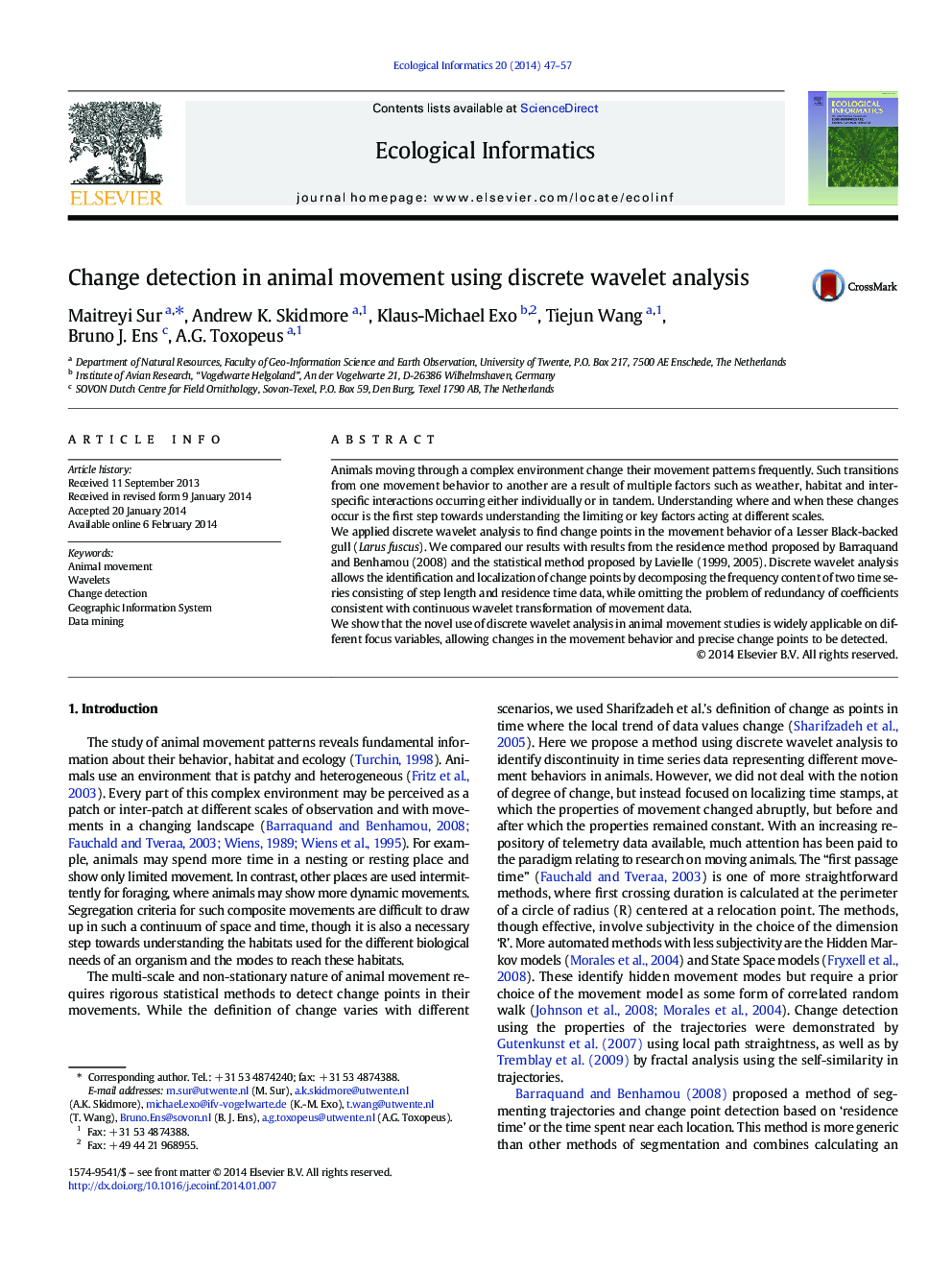| Article ID | Journal | Published Year | Pages | File Type |
|---|---|---|---|---|
| 4374870 | Ecological Informatics | 2014 | 11 Pages |
•Discrete wavelet analysis is efficient as a non parametric change detection method.•We use empirical data of a moving Lesser Black-backed gull.•Two time series namely step length and residence time are calculated.•Change detection using discrete wavelet analysis was compared with Levielle method.•Discrete wavelet analysis automates precise change detection in animal movement.
Animals moving through a complex environment change their movement patterns frequently. Such transitions from one movement behavior to another are a result of multiple factors such as weather, habitat and inter-specific interactions occurring either individually or in tandem. Understanding where and when these changes occur is the first step towards understanding the limiting or key factors acting at different scales.We applied discrete wavelet analysis to find change points in the movement behavior of a Lesser Black-backed gull (Larus fuscus). We compared our results with results from the residence method proposed by Barraquand and Benhamou (2008) and the statistical method proposed by Lavielle (1999, 2005). Discrete wavelet analysis allows the identification and localization of change points by decomposing the frequency content of two time series consisting of step length and residence time data, while omitting the problem of redundancy of coefficients consistent with continuous wavelet transformation of movement data.We show that the novel use of discrete wavelet analysis in animal movement studies is widely applicable on different focus variables, allowing changes in the movement behavior and precise change points to be detected.
